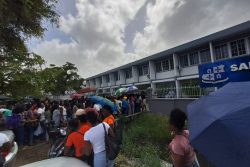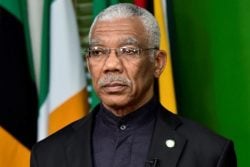Last Friday, the Guyana Teachers’ Union (GTU) disclosed that it had opted to set aside its protracted industrial action, opting instead for the option of discourses with the government that would yield a satisfactory settlement to a state of affairs that was drifting ominously into a condition of gridlock. Truth be told, there had always been an overarching jitteriness over ‘holding out’ on picket lines when that appeared not to be going where it needed to go, that is, by providing the hope that the teachers’ industrial action was beginning to ‘move’ the government to a more conciliatory position on the issue of improved emoluments for teachers. Strikes, for all the breakthroughs that they sometimes bring, can have a worrying meltdown effect so much so that their substantive motion is usually to seek to arrive at a junction of dispute settlement at the shortest possible time.
The Ministry of Education’s Friday pronouncement in the media regarding the setting aside of the protracted industrial action ignored what, for the Teachers Union, is the most positive gain to be realized up to this time in that it still possessed what one might call a measure of industrial relations ‘bite’ necessary to get the attention of government. What the announcement of the return to work by teachers would appear to point to as well is a crack in the thick crust of obduracy that appeared to be manifested in the earlier posture of seeming intransigence of the government in the process of its discourses with the GTU. However, what would also have kept the Teachers Union, particularly, focused on nudging the discourses in a positive direction, was, almost certainly the resoluteness on the picket line that could only be relied on to ‘hold strong’ depending on the results forthcoming at the negotiating table. For the moment, we must wait to see whether the discourses and their outcomes that precipitated the GTU’s back-to-work call will hold good in a negotiating setting that is very much still ongoing.
Thinking ahead, there can be no question than that both the Ministry of Education and the GTU now have a shared responsibility for ensuring that such progress that appears to have been realized at the negotiating table up, to this time, is consolidated and built upon. Here the point can hardly be made too strongly that the industrial action that has been a key element in the whole affair – while it enjoys a more than generous measure of support – has left the education sector significantly weakened, so much so that the debilitating implications are likely to be manifested in the education system in the period ahead. Nor does this week’s return to the classroom by the teachers, in itself, go far enough to give rise to the assertion that we are past the worst. The biggest immediate-term challenge will repose in what, presumably, will be the formidable task of piecing together a teaching/learning regime that has, over several months, been battered by the effects of the teachers’ industrial action.
While all of this is unfolding, the residual ‘demons’ like the rash of in-school challenges such as violence, show no inclination to want to go away. In this regard, it is widely felt that much of this is partially a consequence of the leaden-footedness of the Ministry of Education to act decisively to rein in this ‘demon’. At the heart of all this, one feels, is a chronic deficiency in the relationship between the Ministry and the school system itself, which, in these challenging times, to an overwhelming extent, would appear to have been derived from what is felt to be the Ministry’s failure, over time, to roll up its proverbial sleeves and work more closely, collaboratively, with its satellites – the schools. Those openings can be a precursor to real and positive change.




